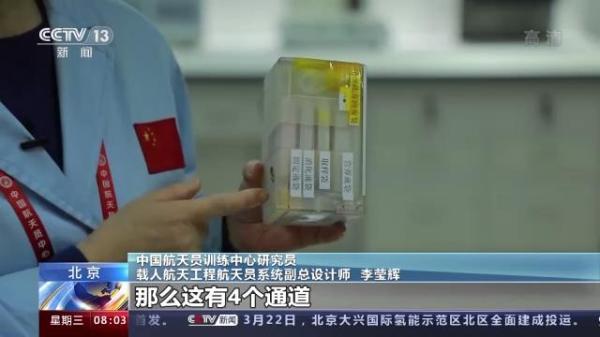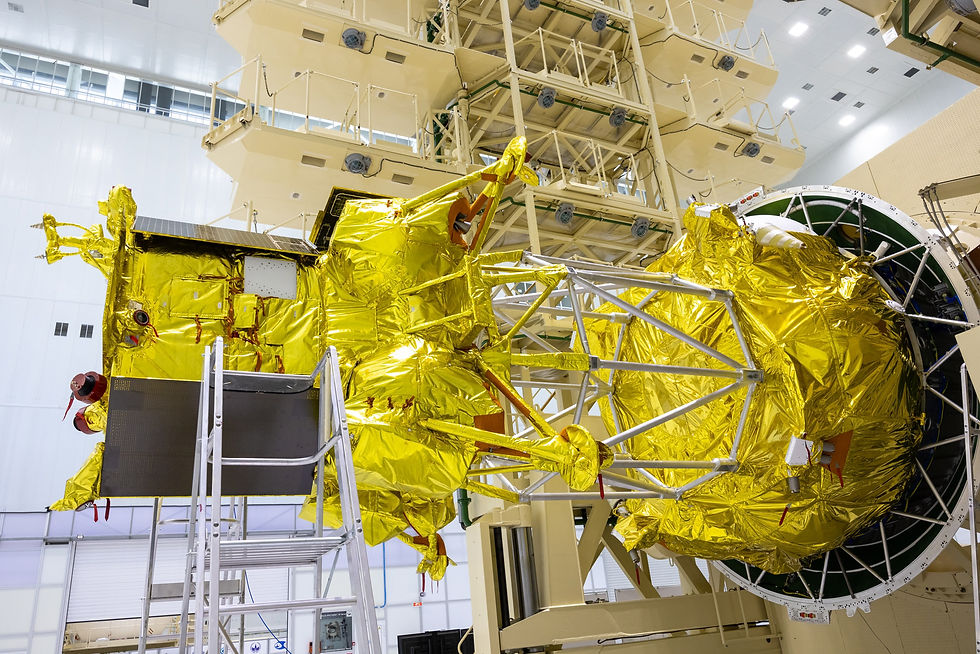Final preparations begun for Shenzhou-13 Crew mission to return to Earth
- Karthik Naren
- Mar 26, 2022
- 4 min read
Updated: Mar 27, 2022
Taikonauts aboard the China's historic Shenzhou-13 mission are nearing the completion of their record-breaking six-month-long stay in the space station, and will next week start their final preparations ahead of their expected return to Earth in April 2022.

March 25, 2022, BEIJING: Three Chinese Astronauts (taikonauts) of Shenzhou 13, aboard the Tiangong Space Station in Low Earth Orbit; Zhai Zhigang, Wang Yaping and Ye Guangfu, have successfully completed two extravehicular activities, livestreamed two popular-science lectures and hosted the Beijing-Hong Kong-Macao Tiangong Dialogue, as well as carried out more than 20 scientific experiments based on the previous Shenzhou-12 mission, since the crew began their mission to the country's space station on Oct. 16, 2021.
Before leaving the Station, there are a lot of things that need to be sorted out; The crew of "Shenzhou 14" will come up more than a month after the "Shenzhou 13" crew's return, so products and equipment should be put in place in advance "including those packages and products on Tianzhou-2 and Tianzhou-3 cargo spaceship". Another important thing is about the spacecraft's descent module to be loaded with the important samples to be brought back from space.
Science from Shenzhou 13
The Shenzhou 13 mission completes more than 20 (on-orbit) scientific experiments on the basis of the Shenzhou 12. On the one hand, these experiments revolved around new technologies for astronaut health monitoring, on the other hand, new scientific knowledge and new discoveries, and on the other hand, data accumulation, and completed a series of innovative researches
Cardiomyocytes 'calcium flickering' in weightlessness observed for the first time
Astronauts have completed the world's first case of renal epithelial cells from human urine, and transformed them into cardiomyocytes through gene reprogramming.

This is also the first time in the world to see the shrinking process of myocardial cells (in a weightless environment). A fluorescent protein is edited by gene editing technology, then through the fluorescence of a fluorescent protein, we can see the blinking process of calcium signals during the contraction process, said Li Yinghui, the deputy chief designer of the astronaut system with China Astronaut Research and Training Center
This technology can be used to understand the characteristics of cardiovascular changes under the condition of weightlessness. On the other hand, it also provides a very good experimental model for public health, human regeneration and aging, including human longevity and the occurrence of heart disease. - Li said.
Experiment on skin stem cells
The Shenzhou 13 astronauts and researchers have also completed the world's first suspension culture experiment of skin stem cells under long-term weightlessness conditions
The cells are in one of our small houses, then there are 4 channels, this cell can survive and survive in this system for up to a month, for us to conduct cell research in long-term weightless conditions, provides an important technology platform. According to experts, carrying out such cell space experiments will help humans better understand life and break through themselves.
Why do we do stem cells?
Stem cells provide very important basic scientific support for human health. If our astronauts want to fly farther and fly healthier, it is inseparable from the new gains and new understandings that our aerospace medicine keeps gaining. Only with more and more of these new gains and new understandings, will our support for astronauts become stronger and stronger, Li answers to CCTV.
Medical Examinations of Astronauts
Currently, the physical and psychological conditions of the three astronauts are better than expected given their long duration in space, meeting the conditions for returning to Earth, said experts with Astronaut Center of China(ACC). The video showed that the crew have been stepping up their physical exercises as they look to strengthen their bodies before re-entering the Earth's gravity.

"In terms of exercise and medical examinations, ground control team has strengthened it specifically. Based on the data obtained from their physical in-orbit examination, we have made targeted adjustments to the entire protection plan before their return. In fact, the focus at this stage is on guaranteeing the astronauts' physical exercise to prepare for a safe landing and safe return," said Zhong Weiwei, an associate research member at ACC.

Recently, The astronauts delivered another livestream lecture to students on Wednesday afternoon, the second class conducted from China's space station.
Extra Vehicular Activities
On 7 November 2021, the first planned spacewalk was carried out by Zhai Zhigang and Wang Yaping as they left the Tianhe core module with their Feitian EV Suits to conduct extravehicular activities. Wang Yaping made history by becoming the first Chinese woman to carry out a spacewalk. They were tasked with conducting the installation of the robotic arm suspension and the adapter, and also to do typical tests of equipment. The spacewalk lasted for 6 hours and 25 minutes.

On 26 December 2021, Ye Guangfu and Zhai Zhigang conducted the second planned spacewalk, with Wang Yaping assisting the pair from inside the Tianhe module. Ye and Zhai's tasks included deploying an external "panoramic camera C", installing a foot restraint platform and testing various methods of moving objects outside the station. The spacewalk lasted 6 hours and 11 minutes.
Upcoming Missions for Tiangong Space Station in 2022.

After the Shenzhou 13 mission, that will conclude with a final technology verification, crew examination on a long duration spaceflight. The future missions to Tiangong space station; The China Manned space (CMS) program will permanently dock two Science Laboratory Cabin Module "Wengtian and Mengtian" to Tianhe Core module, launching in mid-summer 2022 on a Long March 5B rocket from Wenchang. Undocking of Tianzhou 2, The Launch of "Tianzhou 4" cargo spacecraft followed by "Shenzhou 14" manned missions are planned in upcoming months. The agency also opens the opportunity for international cooperations and participation in Chinese space station program.














Comments